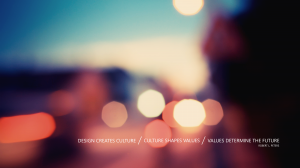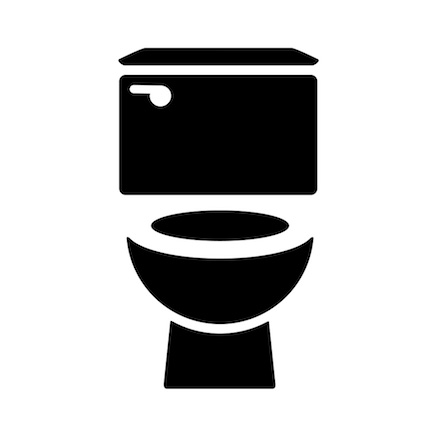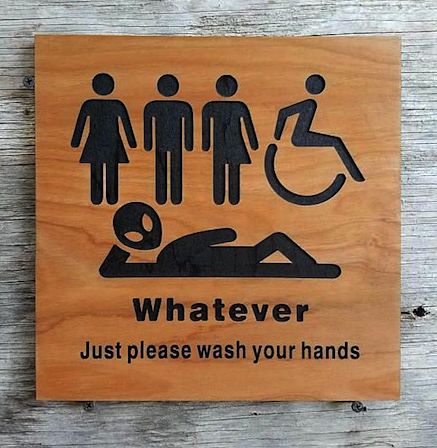— Bertrand Russell (paraphrased)
13 May 2020
15 June 2019
26 May 2019
65 years ago today… this happened.

I’ve heard that I now qualify for a free fishing license in the Canadian provinces of Manitoba and Ontario… sashimi days lie ahead.
Cheers!
30 March 2019
A cold (yet productive) winter…
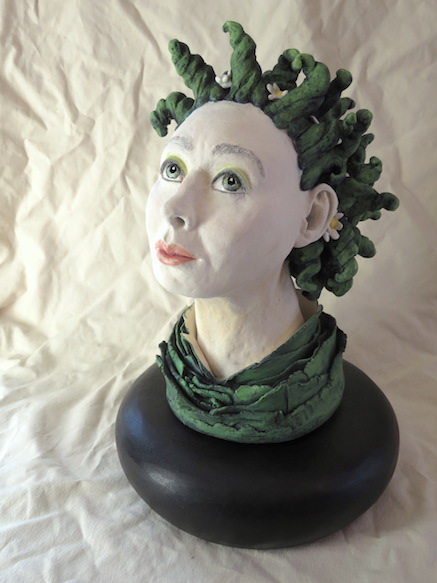
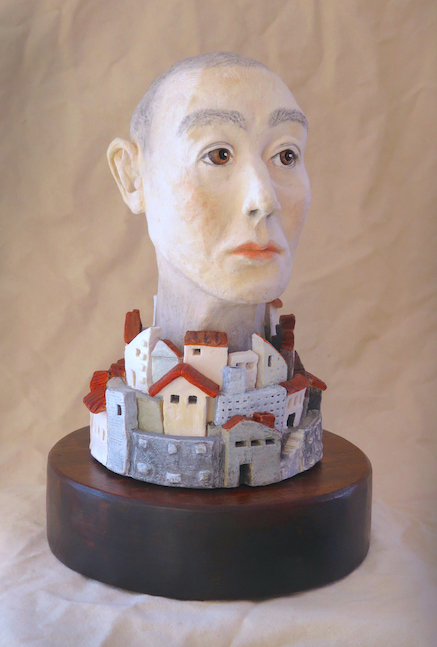

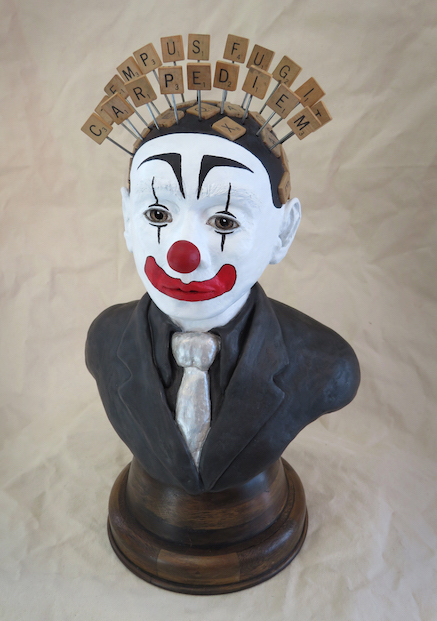
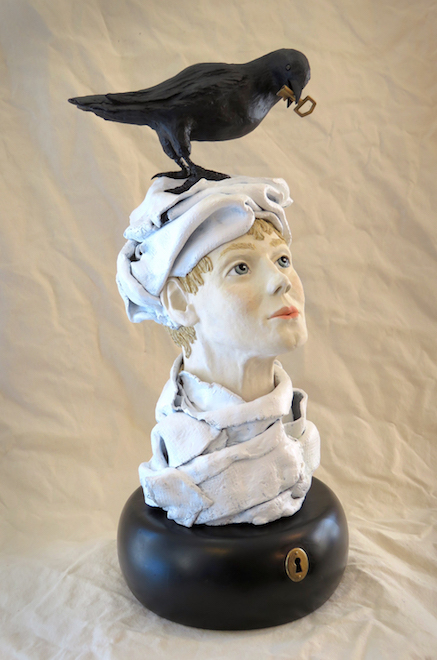
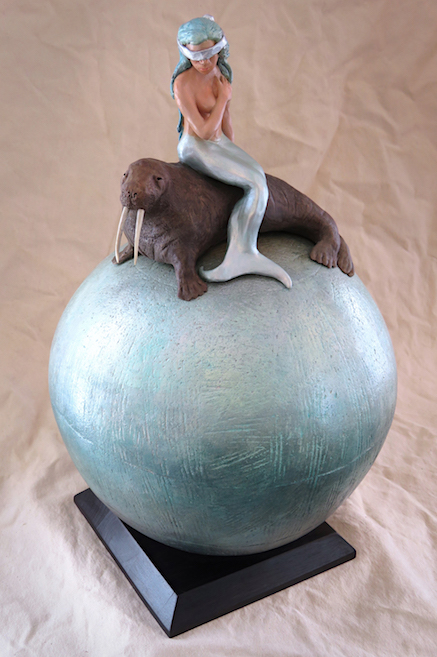
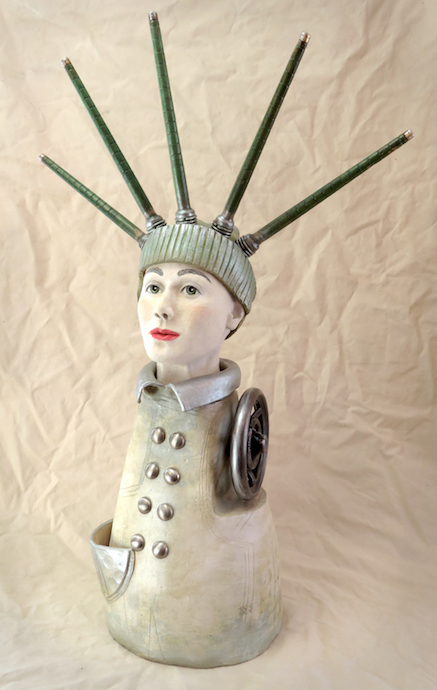
Winnipeg Beach, Manitoba
As had been predicted by some weather prognosticators, the past four months have proved to be an exceptionally cold, harsh winter. At Christmas, Ev and I discussed how to make the best of this challenge — and a decision to focus on creating new work in her ceramic/sculpture studio ‘What? Clay Art & Curios’ offered the solution. (The door to the studio is less than 20 meters from the front door of the house, so, no worries about debilitating wind-chills…).
Ev and I collaborate on many of her pieces, with me acting as studio assistant — my background in painting and illustration is put to use (e.g. on cold-finishes) and I particularly enjoy the aspect of multi-media assemblage (combining and joining diverse materials in innovative ways), up-cycling antique and “scrap” elements, and mounting her sculptures to bases, etc. We have a lot of fun together.
Shown above is a sampling of the pieces created in Ev’s studio so far this year (some have sold, some are in galleries) — more complete postings on these pieces (including titles, dimensions, technical descriptions, and “artist’s statements)” can be viewed on her website here.
9 February 2019
RIP… Tomi Ungerer (1931-2019)
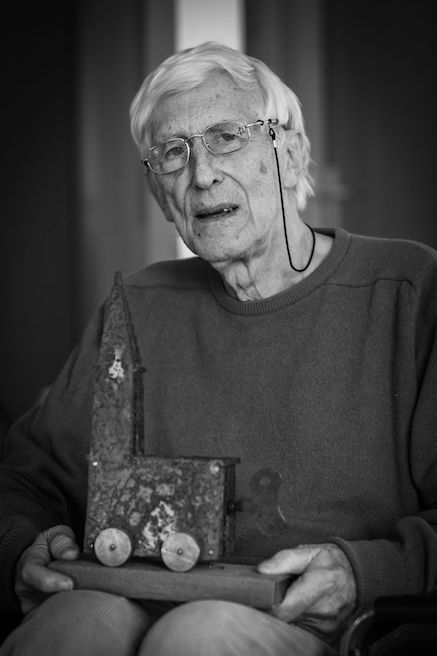
Cork, Ireland
Tomi died peacefully in his sleep with a book beside him. He recently began working on a new collection of short stories and he has two major exhibitions opening in Paris this Spring. Tomi’s imagination never slept. Read more…
A polymath and a provocateur, Tomi Ungerer is perhaps best described by his motto: ‘Expect the Unexpected’.
His life and work defied easy categorization. Although best known as an author and illustrator of children’s books, Tomi Ungerer’s oeuvre encompassed diverse practices including illustration, advertising, writing, collage, sculpture and architectural design. From the beginning of his career in the 1950s to the present day, Ungerer’s work challenged social norms and conventions with breath-taking originality.
Born in Strasbourg in 1931, Ungerer worked in New York, Canada and Ireland as well as his place of birth. He has published over 140 books which have been translated into 28 different languages, ranging from his acclaimed children’s stories to autobiographical accounts to controversial volumes of social satire and adult themes.
Ungerer’s illustrative style is celebrated for its minimal dexterity, darkly comic wit and dazzling inventiveness. Renowned for his iconic advertising campaigns and his contentious political posters that railed against the Vietnam War and racial injustice in the 1960s, Ungerer’s frequently subversive work provides invaluable commentary on the divisive socio-political events of the second half of the twentieth century. Ungerer’s work continues to be politically-charged and he has been involved in numerous humanitarian campaigns for nuclear disarmament, Amnesty International, Reporters without Borders and more recently, European integration.
(from Tomi Ungerer’s official website) Learn more here…
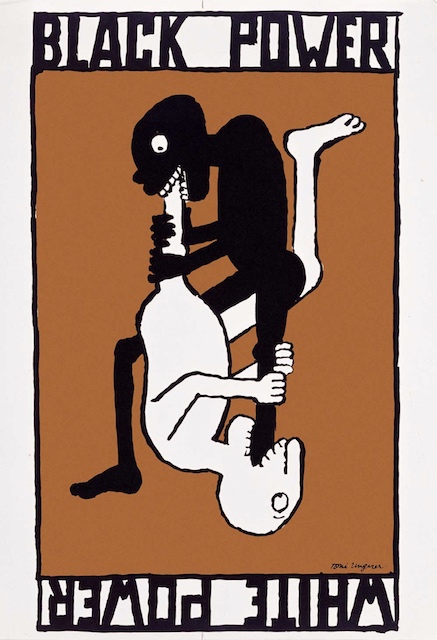
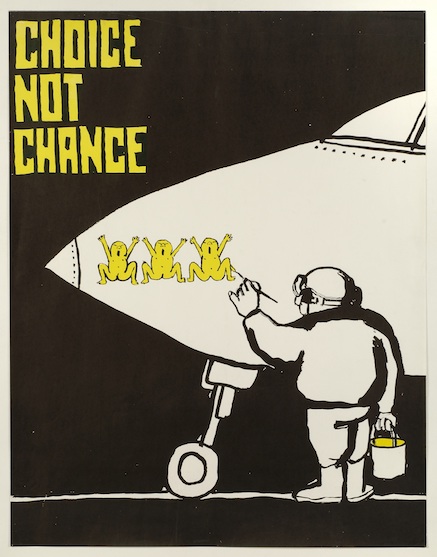
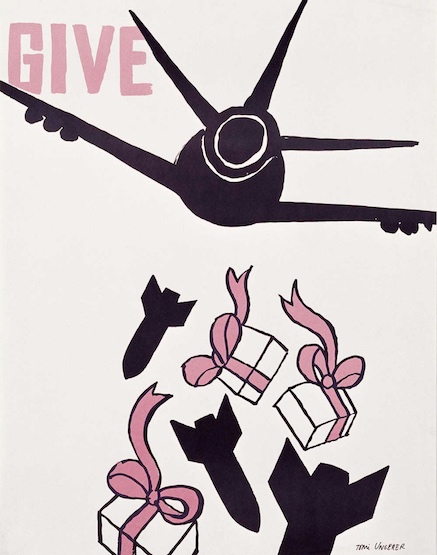
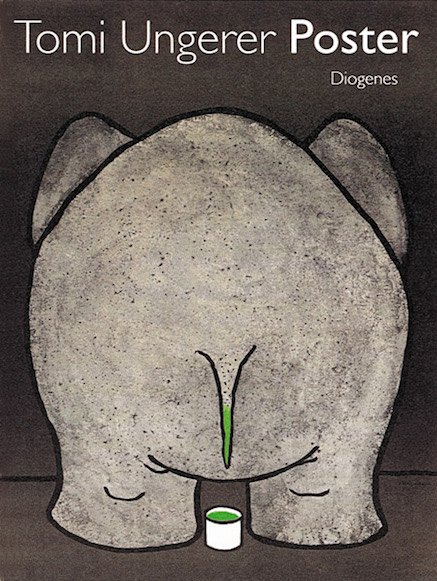
“Posters for me are the most challenging and gratifying exercise. A poster has to act by impact, to catch the eye of a passerby within a few seconds. I would say the poster is more of an art form than most other kinds of advertising.
In the 1960’s I started to make political posters. Two subjects sparked my revulsion and my anger: racial segregation and the War on Vietnam. Later I did posters for other causes such as Amnesty International, liberty of the press, animal rights, ecology, nuclear disarmament and so on.” —Tomi
3 January 2019
“Quotable quotes”… (gone rogue).
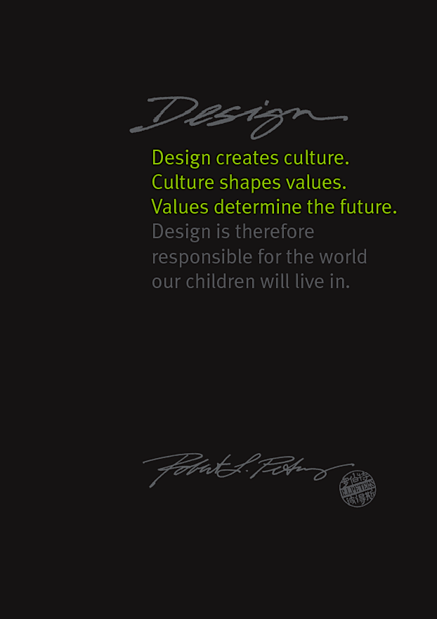
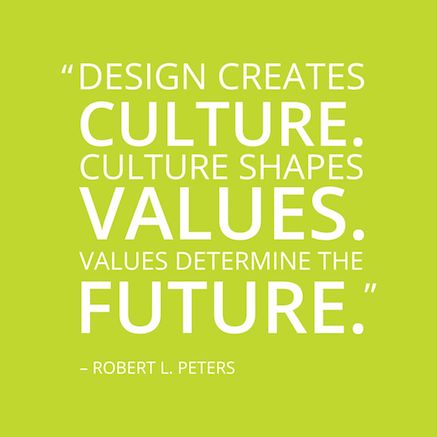
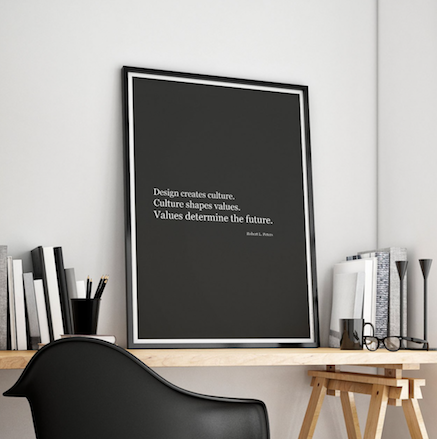
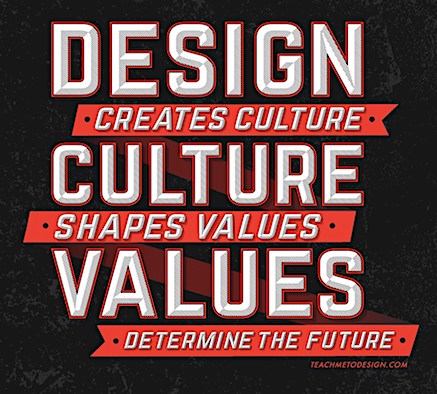
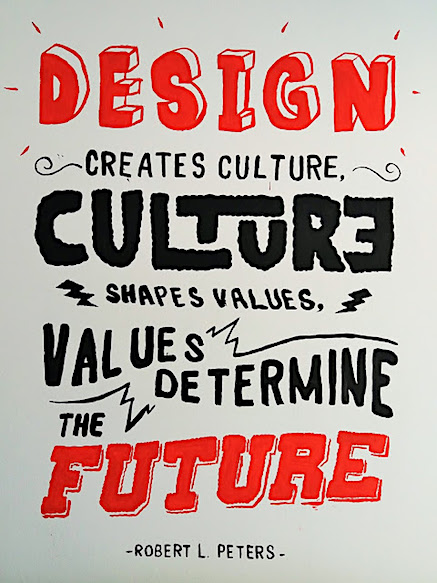
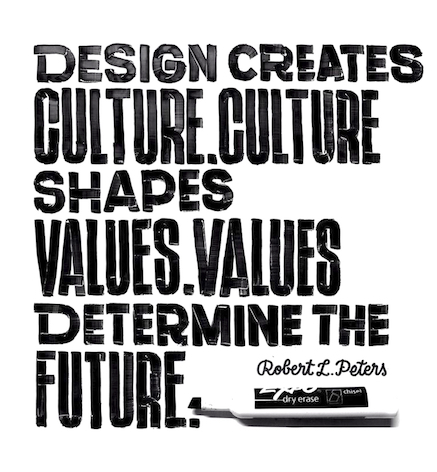
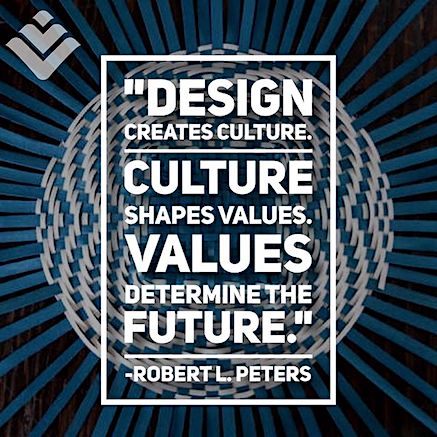

Seemingly everywhere.
I first used the line “Design creates culture. Culture shapes values. Values determine the future…” in a conference lecture in the mid-or-late 1990s.
That simple statement has since spread through the Interwebs like some sort of memetic rogue virus, repeated relentlessly by “famous quotes” sites, “wallpaper generators” and the like — a quick Google search brings up literally thousands of graphic “treatments” of this — on sites around the planet devoted to graphic design, yes; but also fashion, interior design, poster and decor sites, product design, architecture, engineering, strategic planning, marketing, medicine, linguistics, social work, advertising campaigns, etcetera, etc…
In fact, hardly a month goes by without someone, somewhere asking me for permission to use this now-famous statement for their own purposes — and of course I grant them full permission. While being widely quoted is certainly flattering, it does carry with it the caution to always “watch what you say.” (-:
For the record, I initially stated the “quotable quote” in question along with the advisory conclusion re: the power of design (and the ensuing responsibility of designers): “Design is therefore responsible for the world our children will live in.”
The top image is my own, from a book on design published in China. The images following are a tiny sample of the many “treatments” found online… (the Mao Clinic even offers it as “downloadable wallpaper” — click image below).
2 January 2019
2019… and high time for unisex toilets.


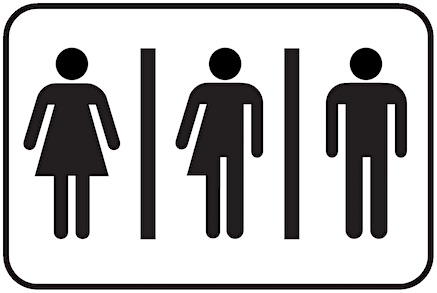
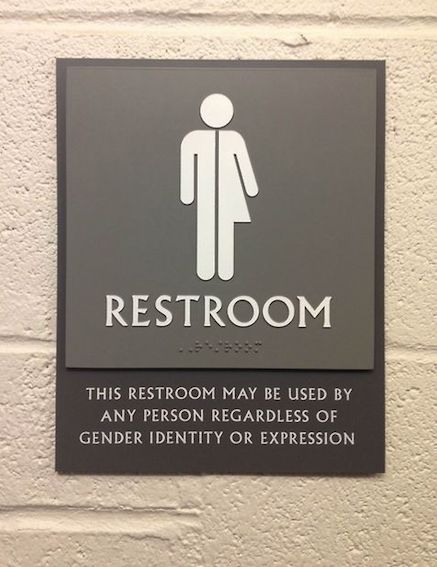
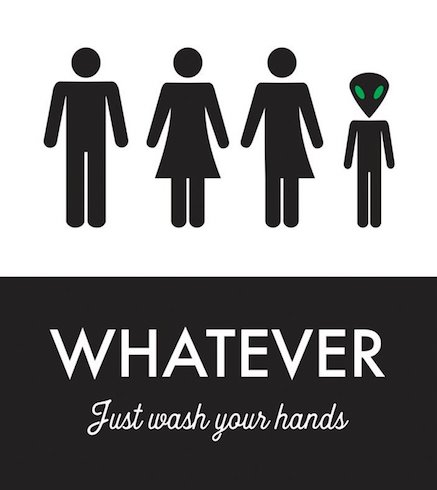
Worldwide
Come on, People! It’s high time for unisex public toilets (aka all-gender toilets, gender neutral toilets, gender free toilets or all-user toilets). These are all toilets which can be used by anybody, regardless of gender identity or presentation.
Public toilets and sanitation facilities need to cater for all people, including those who are part of the LGBTI community. This is an issue with respect to the human right to water and sanitation and also from the perspective of the Sustainable Development Goal 6 (of the United Nations), which aim for universal access to sanitation and gender equality. Simply put, unisex public toilets provide equal sanitation space for all genders.
Gender segregated public toilets are an outmoded vestige of the Victorian era (200 years ago) where women’s modesty and safety were considered at risk and under constant need of surveillance and discipline. Before that (prudish) time, public lavatories around the world offered room for both sexes.
During the past two centuries public toilets around the world have been frequently been segregated by race, class, religion, and gender — and have often been completely inaccessible to certain people with unique needs or disabilities. Making public facilities universally accessible, and to diverse populations, has long been an issue on our “shrinking planet” — it’s high time for change!
More on the topic here. Images from diverse online sources…
Please treat all others as equals, and please do wash your hands.
27 November 2018
19 November 2018
Pay us to kill you…
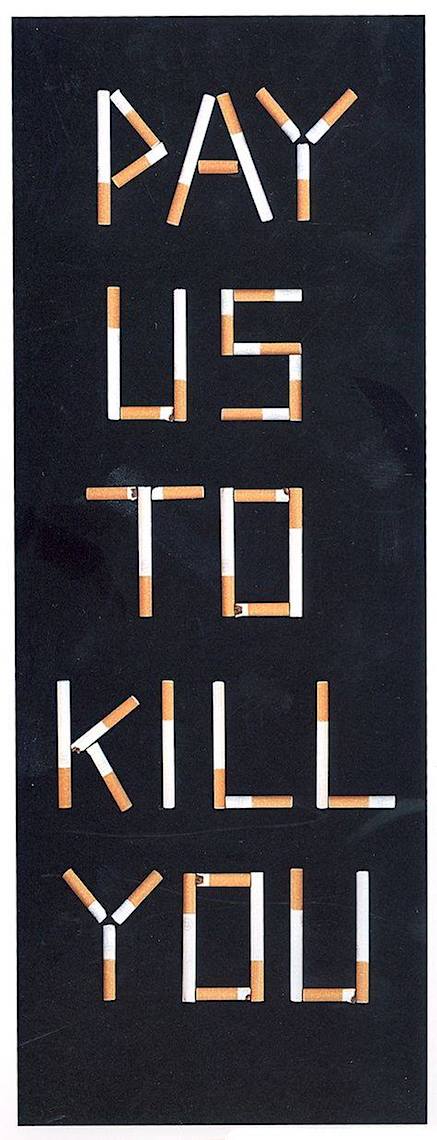
Thanks to David Peters (and his friend David Asari)… “Dan Covert is the designer of the anti-smoking poster. He did this when he was a student at California College of the Arts for his Graphic Design 1 course taught by Mark Fox. Impressive work for a GD1 student.”
14 November 2018
NO!
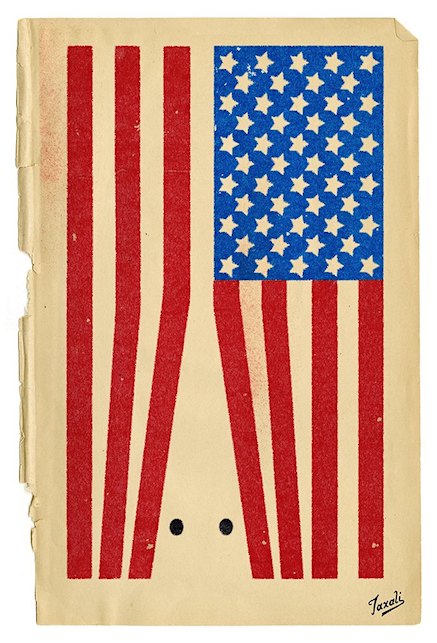
In heartening news, this just in…
Friend Gary Taxali shares: “I just got a phonecall and I am very excited to announce my artwork, “NO” won a Gold Medal at the Society of Illustrators in NYC! Thank you to the judges for this very special honour. Especially for recognizing this image because it speaks to the amount of hate that’s growing in the world.”



